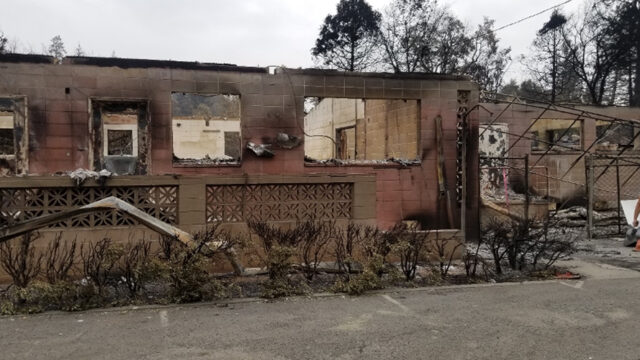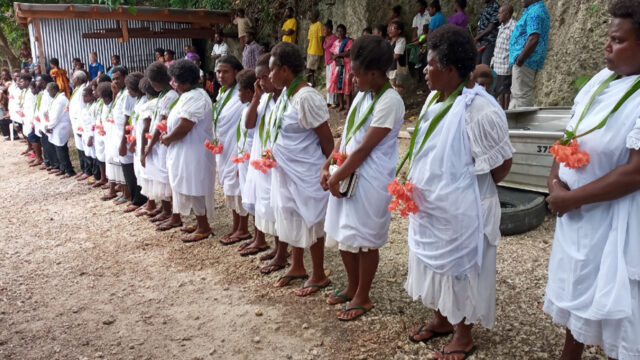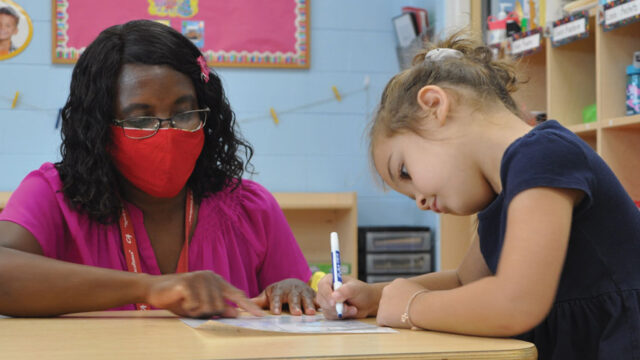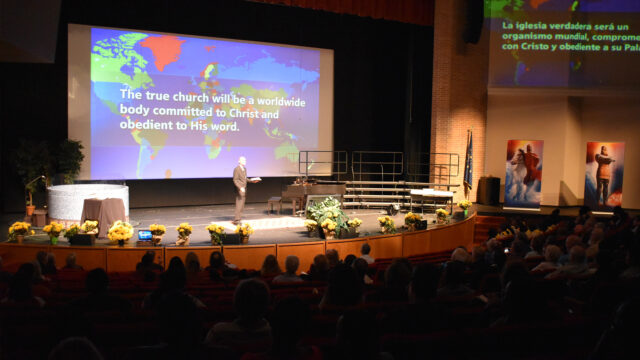Why some believe they offer unique features that families and teachers still value.

The nostalgic days of Little House on the Prairie are gone forever. And with them, most of the 190,000 one-room schools that dotted the landscape of the United States 100 years ago.*
Those small schools, consisting of one classroom with a single teacher who taught academic basics to several grade levels, made it possible for children living in remote areas to get an education.
As we fast-forward to the 21st century, we must ask: “Are one-room schools now simply relics of days gone by?” Although the number of single-room schools has dwindled, the North American Division of the Seventh-day Adventist Church and, by extension, the Lake Union Conference, support the concept of one-room schools because they continue to play such an important role in Adventist education. Today, the Lake Union Conference has 65 schools that offer elementary education. Of that number, 28 — almost half — are one-room schools.
While it’s true that larger schools have more staff, bigger facilities, and additional programs, one-room schools offer unique benefits that students, parents, and teachers alike have come to value.
Former Students Reminisce
Our denomination’s first elementary school — a one-room school — opened in 1880 in Battle Creek, Michigan, United States. Other communities soon caught the vision and church schools began to appear across the country.
The first Adventist church school in Illinois was located in Aledo, close to the Iowa border. The school opened in the 1940s and Ramona Trubey, her two sisters, and two cousins, Bob and Larry, made up the entire student body.
Trubey remembers church members working together to provide the school for the two families, an investment she felt was worth it. “I wouldn’t trade those days for anything,” she said. “With only five of us in school, we had a lot of one-on-one time with the teacher, which made it easy to get the help we needed to progress quickly.”
Another person who treasured his time at a one-room school is Neal VanderWaal, who attended the school in Rockford, Illinois, from 1947 to 1950. The school was attached to the rear of the church and had a tiny playground — just a city lot. VanderWaal recounts that while they didn’t have all the educational opportunities many other children had, they developed character.
“We read Bible stories, but also learned life lessons from the True Education Readers and the stories our teacher read to us. I learned honesty, patriotism, determination, and temperance. We learned lessons of fair play, cooperation, and sharing. Every morning, we pledged allegiance to the flag. I learned reverence for God, and respect and love for everyone regardless of their color or beauty,” he recalled.
Influential Teachers
Jennifer Landis attended a one-room school in Ionia, Michigan, for four years and was the only student in the upper grades. She remembers an enjoyable time in the same classroom as her sister who is five years younger. “I was able to get my work done quickly and then help the teacher with grading and other project,” she said. Landis’ calling as a teacher was solidified during that positive experience.
Beth Nelson spent only two years in a one-room church school in Almond, Wisconsin, but those two years also influenced her career choice. “My teacher was very spiritual and caring. She once said that she hoped that all of us would be in the Lord’s work someday. She was the only person that ever said anything like that. It made such an impression on me and led me to go into education and teach at church schools in Illinois and Wisconsin.”
-

In Columbus, Indiana, an Adventist one-room school recently reopened after being closed for years. [Photo: Christa McConnell] -
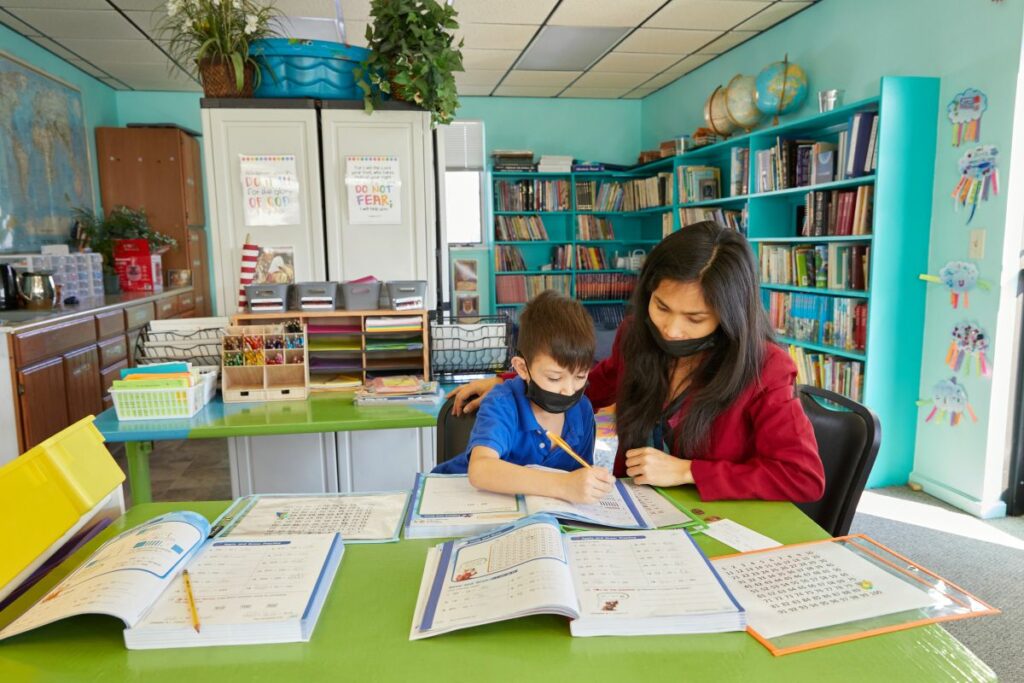
After being closed for more than a decade, church members in the Richmond, Indiana, area worked hard to reopen the local Adventist one-room school in 2019. [Photo: Christa McConnell] -

Many Adventist church members and leaders believe one-room schools continue to play an important role in Adventist education across the North American Division. [Photo: Christa McConnell] -
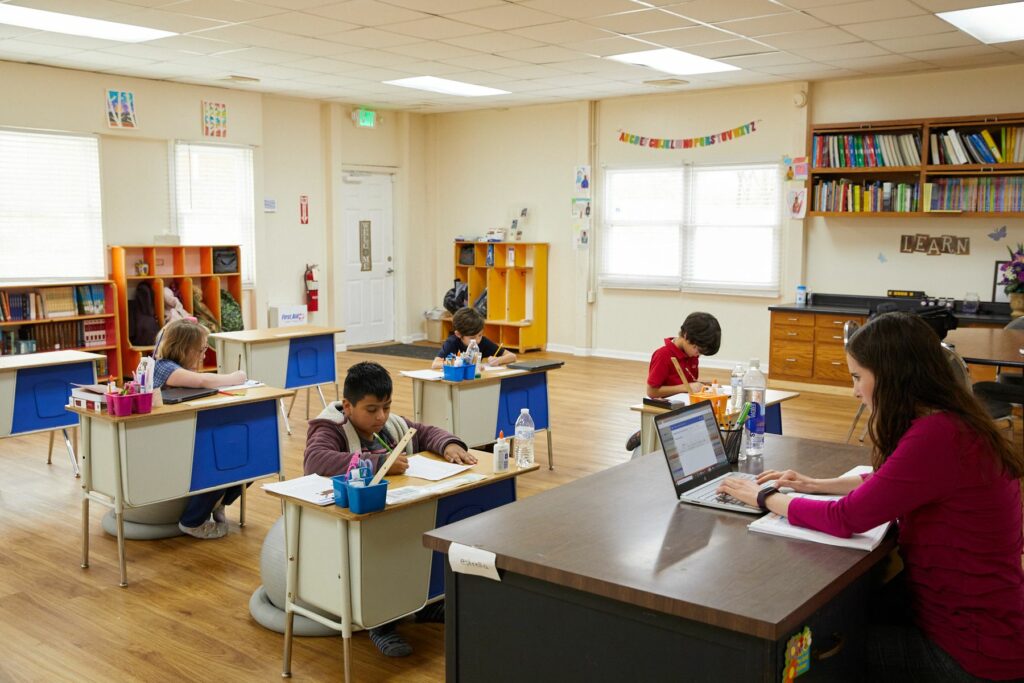
Although their number has dwindled, the North American Division and the Lake Union Conference in the United States support the concept of one-room schools. [Photo: Christa McConnell]
Brooke Sadler, former educator and missionary, was a charter member of the church school in Ann Arbor, Michigan, and graduated from the 8th grade in 1955. He recalls his teacher, Dorothea Williams, managing her class of 30 students effectively. “It was crowded,” he remembered, “but our teacher was such an inspiration in the way she treated us and guided us. It was a great place to go to school.”
Danita Fish also has fond memories of her years at Adventist Christian Elementary in Indiana, and singled out her teacher, Janelle Ruba. “She was able to give me so much one-on-one time, so I got the help I needed, and I retained more,” Fish said, and expressed gratitude that her 5-year-old son is now a kindergartner at the same school. “I couldn’t believe how he started reading after only a few weeks.”
Model of Collaboration
Studies have shown that students learn better when they have to teach the material to others. Peer-based and team-based learning have also been found to be quite beneficial, particularly for preparing students for success in workplaces where group-based work across teams of different ages and backgrounds is prevalent.
Lake Union Education Superintendent Linda Fuchs taught for 26 years before taking on her administrative positions and treasures the three years she spent teaching in a one-room school. She, too, bore witness to the effectiveness of peer-to-peer teaching.
“The younger students loved the older ones, and the older students felt a responsibility toward the younger, often explaining how to do an assignment, helping them warm up their food in the microwave, or teaching them how to jump rope or shoot a basketball,” she said, adding that “one-room schools give the older students many opportunities to learn leadership skills [that] they can use all through their life.”
Seven of Linda Morrow’s children attended the Adventist Christian Elementary one-room church school in Indiana, and she now has a grandson, Josiah, at the same school. Morrow has remained involved with the school and cherishes its family atmosphere. She welcomes “the good role models Josiah has had with the upper grade students.”
Also reminiscing about the mutually beneficial partnership formed in a single-room school is Cathy Buell, a recently retired teacher in Michigan. “The younger students looked up to the older ones and often listened more carefully to what they [were] saying, especially when it came to spiritual matters. And working with the smaller children helped the older students learn patience.”
Reversing the Slide
While some of the one-room schools have grown into larger schools, others have closed their doors for various reasons. This was true of the Columbus and Richmond schools in the Indiana Conference. But in 2019, the congregations connected to those former schools began discussing the possibility of once again providing their young people with Christian education.
After contacting the education superintendent, both churches began working to turn their dreams into reality. And when the school year started last August, Maple Creek Adventist Academy in Columbus and Richmond Adventist Elementary School opened their doors after being closed for more than a decade.
Thomas Clark pastors in the Columbus area and says that connecting a school to the church really helped build momentum with the members in his district. “We had a mission, and the people came together, working on a common goal. We’ve also noticed that our students’ extended families have been attending more of our church functions and mingling with our church members.”
Blaine Fults, a pastor who served in the Columbus district, noticed an increase in church attendance since their school opened. Jim Balkovek, one of the church elders, added that church members have personally invested their time in the school, teaching art classes, leading out in worships, a Week of Prayer, and other types of presentations.
One-room schools have been, are, and will always be an integral part of Adventist education. Only in heaven will we begin to understand the vital role one-room schools have had in the lives of students who have passed through their doors.
The original version of this story was posted on Lake Union Herald.
*One-Room Schools Holding on in Rural America, National Public Radio, December 22, 2005.



